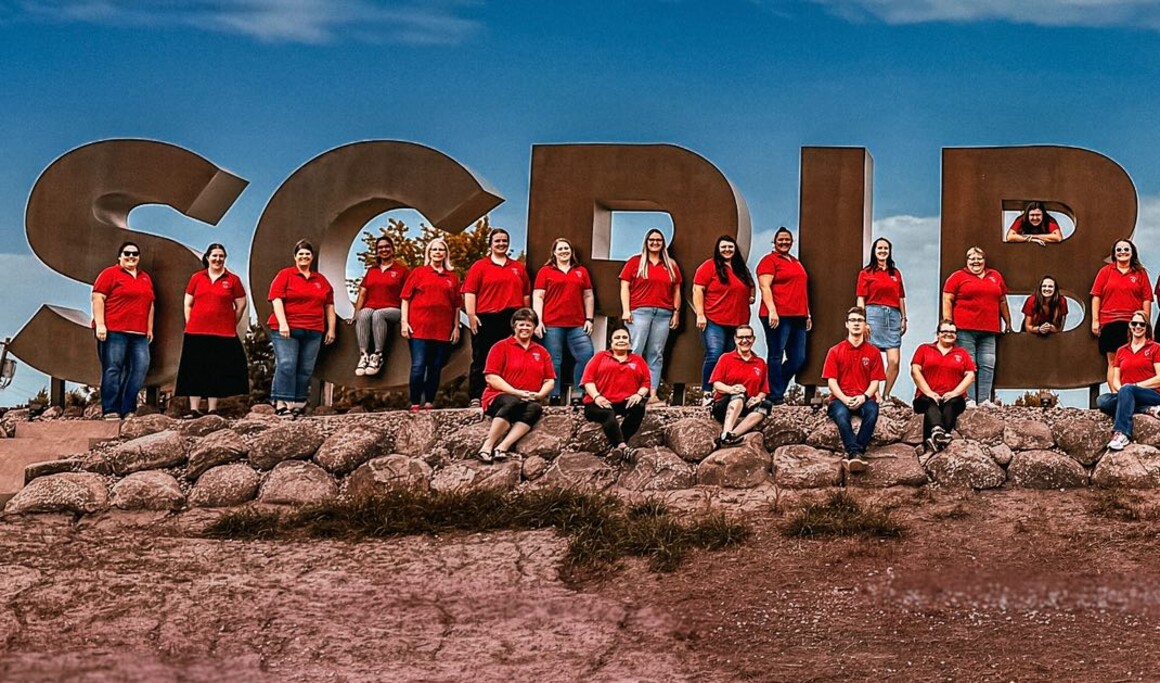History of Scribner
Scribner, Nebraska
Dodge County
"'OLDEN DAYS, THE GOOD OLE DAYS -- WHEN LIFE WAS SIMPLE...' Not so! We do them a disservice when we think of their lives as being simple," says Garrison Keillor. While the fertile lands of the Elkhorn Valley provided early settlers with much of what they needed for farming, it was neither simple nor easy. During the grasshopper-plague years, from 1873-78, farmers paid 60 percent interest on money needed for purchasing seed. As agri-business faces difficult times in our day, we gain perspective by looking at the problems faced back then. This primarily German and English community was platted in 1870 by John Blair, representing the railroads, who named it for a relative, a founder of the Scribner Publishing Company. A bustling railroad town from the start, Scribner continues to be a trade center for a wide area, even though the railroad no longer serves the town. (C&NW ended service in 1984, and the hoped-for extension of F&EVR, due to financial difficulties, had to be scraped, along with the track through Scribner.) In 1874 Scribner's population was 50, by 1920 the citizenry had grown to 1,100, and today there is a constant 1,000 residents. Scribner owes much of its success to businesses that have kept pace with the changes through the years. The 50,000 bushel bin built in 1919 gave way to a grain storage and drying facilities that handles over 3 million bushels annually. For years livestock was shipped from Scribner to the Omaha market by rail. Now hogs and cattle, many raised entirely in confinement, are sold directly to packing plants in this area, which also provide employment opportunities for the community. There have been many floods, but the one in 1944 is remembered as the worst. It claimed two lives and many thousands of dollars in damages. There are plans underway to build a dike around the town. Street paving was completed in the early 1970s, and a new water tower was built in 1979, along with a water treatment and sewage disposal facility. We have come a long way from when fire protection was a series of cisterns on Main Street. Now Scribner boasts a 36-member volunteer fire department. Fine cooperation between the city and rural fire district, and joint tax dollars; have provided funds for the proper equipment and a new fire hall. A 24-member rescue squad, organized in 1948, was one of the first in the area. All members have EMT-ambulance training. The volunteer status shows the concern small town people hold for one another. In contrast with towns that have trouble recruiting people to serve, Scribner has a waiting list. Scribner, the site of the Dodge County Fair each August, has a new auditorium, a museum, a newly remodeled and enlarged public library. In addition to several parks, there is a modern heated swimming pool, and lighted baseball and softball fields. Dead Timber State Recreation Area and the Powder horn Wildlife Management Area are nearby. The entire community is involved in the functioning of the Good Samaritan Society's 81-bed facility, built in 1969. In addition, the Milligan Senior Citizen Center offers fellowship and a noon meal. The eight-unit, low-rent development, built in 1982, is planning an addition. The education of our children has long been a high priority. The 1885 schoolhouse was replaced in 1925. This building was remodeled several times and other buildings added. In 1987 the Snyder and Scribner merged. Today's modern facilities and joint ventures keep pace with the new technology needed to prepare our young people for the future, with many graduates going on to higher education. A Congregational Church was built in 1871. Now six area churches attest to the ever-present role of God in our lives. Church members cooperate in a spirit of brotherhood, with joint services held annually. The growth, changes, and new ideas that we experience today -- some with much difficulty -- will be, to future generations, a part of "the Good Ole Days." Survival for Scribner comes by optimistically drawing strength from the touch-of-pioneer still felt by the townspeople living in the Elkhorn Valley



